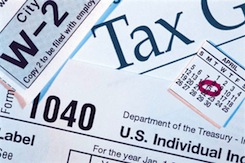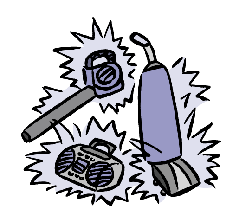Find out if you need to pay under this separate tax system.
The Alternative Minimum Tax, or AMT, is a tax originally instituted more than 40 years ago to ensure wealthy taxpayers paid their fair share of taxes. The tax, however, was never adjusted for inflation, which means it now affects millions of middle-class Americans. This complicated parallel tax has its own set of rates, computations and paperwork.
How do I know if I owe the AMT?
There’s no real easy way to find out. If your gross income is above $75,000 or if you own a business, rental property, partnership interest or S corporation stock, you should run the numbers. To do so, you’ll need to fill out IRS Form 6251 in conjunction with Form 1040.
To Form 6251, you’ll need to add back in a few deductions to your regular taxable income, including your personal and dependent exemption deductions, your standard deduction (if you didn’t itemize), your state and local tax deductions, tax and investment expenses and your home equity loan interest (unless your loan was used solely for home improvements). Some additional itemized deductions and medical expenses may also need to be added back in. Then you can find out if you owe the AMT.
Luckily, there are easier ways to find out. You can hire professional help, purchase a tax preparation software or use the IRS’s online AMT Assistant. This tool won’t tell you what you owe, but it will tell you if you must pay the AMT.
How much AMT do I owe?
The maximum tax rate for the AMT is 28 percent. While this is well below the regular maximum tax rate of 35 percent, more income is taxable and available deductions aren’t as favorable—which means if you have to pay the AMT, you’ll likely end up paying more in taxes.
It’s not all bad, though. While you do lose a number of regular deductions, you gain a few small tax breaks. You can deduct refunds from state, local and foreign taxes. And your tax basis for any stock shares you purchased is higher under the AMT, which lowers your taxes when you sell. You can also deduct the AMT exemption, which for the tax year 2011 currently amounts to $48,450 for single filers and $74,450 for joint filers.
Whether or not you end up owing the AMT, it’s a good idea to run the numbers to find out. Better that you find out you owe the tax rather than having the IRS make that discovery—otherwise, you could end up paying a whole lot more.
Related Articles:
- Year End Tax Tips!
- How To Choose A Financial Advisor
- Estate planning: Tax Planning For Your Estate
- Estate Planning: Why You Need A Will
- Estate Planning: Should You Create A Trust?
- Retirement Planning: Start the Process!
- Retirement Planning: How much do I need to save?
- Retirement Planning: Tips for Saving
- Retirement Planning: Investment Options
- Catch Up On Your Retirement Savings
- Should You Invest In An ETF
- Should An Annuity Be Part Of Your Retirement
- What is an IRA?
- What is a 401k plan?
- Is a Roth IRA conversion right for you?
- Investing for beginners: The basics of how to invest your money
 Print
Print Email
Email








